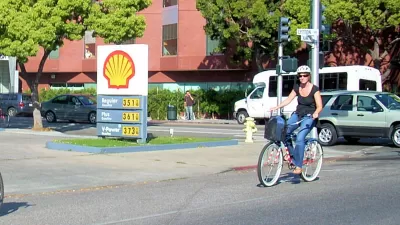Call it $2 gas price envy. Though New York gas prices have dropped $1.20 from a year ago, they are also 25-cents above the national average. State Sen. Jim Seward hopes to spark a statewide movement to reduce prices by reducing state gas taxes.
"State Sen. Jim Seward, R-Milford, today (Feb. 6) announced the launch of an on-line petition drive in support of his initiative to cut New York’s gas tax," states AllOtsego.com.
“One of the leading national new stories is lower gasoline prices, but unfortunately, here in New York, the price drop hasn’t been quite as steep as in other states,” said Seward. “One of the main factors keeping our gasoline prices above the rest of the nation – taxes.”
Sen. Seward's petition to cut New York's gas taxes may be a sign of how quickly the nation has acclimated to low gas prices. A price drop of 33 percent in a year to $2.43 on February 8 is not the issue for Seward—it's the fact that New York State gas prices are higher than in all other states save Hawaii, Alaska, and California, according to AAA's Daily Fuel Gauge Report.
New York does have higher gas taxes than most other states—but do taxes alone account for the higher price?
Motorists in neighboring Pennsylvania paid almost a dime less than their counterparts in New York, yet the Keystone State had the nation's highest state gas taxes on January 1 due to a recent tax increase, according to the American Petroleum Institute [PDF], followed by California and New York.
"Seward also wants to fix how the gas tax revenues are used," writes Robert Harding of Auburn Citizen. "He cited a report released last year by state Comptroller Tom DiNapoli's office that found less than one-quarter of gas taxes collected are used for bridge and road repairs, even though the intent of the gas tax is to use the funds for infrastructure improvements."
However, those funds are being used for transportation—but not for the capital costs where Seward wants them directed. According to DiNapoli's press release:
State operations costs also consume the greatest share of the fund: nearly $1.6 billion in the last fiscal year, including the costs of snow and ice removal by the Department of Transportation and day-to-day staff expenses at the Department of Motor Vehicles. Typically, staff expenses and snow and ice removal costs are regarded as ongoing costs of state operations and maintenance, not capital expenses.
Paradoxically, Seward wants "to cut New York’s gas tax and make sure that funds collected are used for their intended purpose – repairing our crumbling infrastructure." In other words, Sewards acknowledges the poor condition of roads and bridges and the need to repair them while championing reducing the taxes paid at the pump.
If the senator truly wants to repair the crumbling infrastructure while maintaining that roads are plowed and DMV offices are staffed, he might consider championing an increase in state gas taxes at time when New York State gas prices are $1.20 per gallon less than they were a year ago.
Hopefully we'll see stories where state legislators show more concern with how the condition of roads and bridges in their state compare with other states rather than prices paid at the pump.
FULL STORY: SEWARD PETITION: CUT THE GAS TAX!

Planetizen Federal Action Tracker
A weekly monitor of how Trump’s orders and actions are impacting planners and planning in America.

Maui's Vacation Rental Debate Turns Ugly
Verbal attacks, misinformation campaigns and fistfights plague a high-stakes debate to convert thousands of vacation rentals into long-term housing.

Restaurant Patios Were a Pandemic Win — Why Were They so Hard to Keep?
Social distancing requirements and changes in travel patterns prompted cities to pilot new uses for street and sidewalk space. Then it got complicated.

In California Battle of Housing vs. Environment, Housing Just Won
A new state law significantly limits the power of CEQA, an environmental review law that served as a powerful tool for blocking new development.

Boulder Eliminates Parking Minimums Citywide
Officials estimate the cost of building a single underground parking space at up to $100,000.

Orange County, Florida Adopts Largest US “Sprawl Repair” Code
The ‘Orange Code’ seeks to rectify decades of sprawl-inducing, car-oriented development.
Urban Design for Planners 1: Software Tools
This six-course series explores essential urban design concepts using open source software and equips planners with the tools they need to participate fully in the urban design process.
Planning for Universal Design
Learn the tools for implementing Universal Design in planning regulations.
Heyer Gruel & Associates PA
JM Goldson LLC
Custer County Colorado
City of Camden Redevelopment Agency
City of Astoria
Transportation Research & Education Center (TREC) at Portland State University
Jefferson Parish Government
Camden Redevelopment Agency
City of Claremont



























